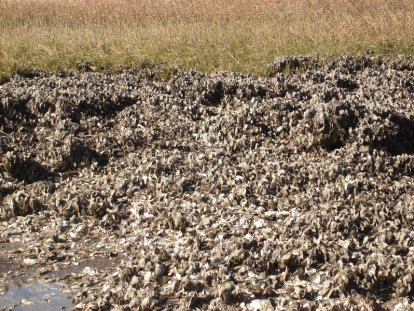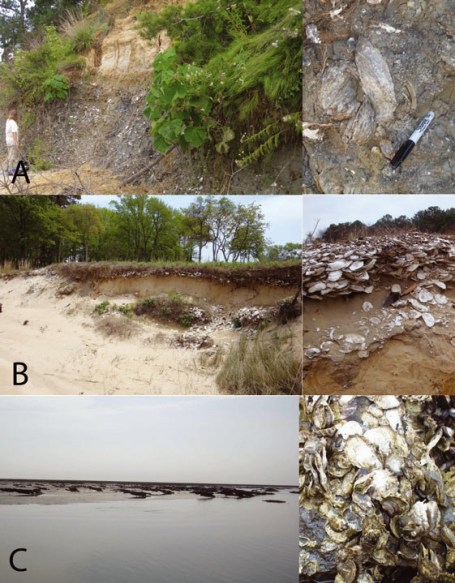Conservation biology – let's get integrated!
This was initially posted at: http://blogs.egu.eu/palaeoblog/?p=600
Conserving our world’s biodiversity is currently one of the biggest challenges we face. I wrote a post recently about some of the issues palaeontologists face when trying to make our science relative to current conservation management and biodiversity issues (and have written elsewhere about this too). This is very much a developing issue within which palaeontology is framing itself, as with ever squeezing science budgets around the world, scientists are being forced to find the hook or application that makes their research ‘relevant’ to broader society. The role that palaeontology can play for both climate change and biodiversity patterns and processes is the natural progression of science accompanying such shifts.
But is it such a simple case that if palaeontologists (or palaeobiologists) start working with ‘neontologists’ and conservation biologists that all of a sudden, bam, a solution for models of animal conservation will spring out of the ground? Unlikely. A new study, however, has demonstrated how if researchers from the fields of history, archaeology, geology, ecology and palaeontology all group together and pool our knowledge and understanding, we can begin to produce sophisticated designs and models that will more confidently guide our ability to manage biodiversity and mitigate the threats global biodiversity currently faces. This seems to be an ongoing theme in research nowadays – it’s no longer within the interests of science to be approached from a ‘divide and conquer’ frame from the different fields, but to work together and utilise the different strengths, and plug the weaknesses, of the different fields to resolve a problem with a multi-pronged approach. Science is stronger if it presents a unified, coherent, and directed front.
Anyway, the research! What did they do, and why.
One of the fundamental aspects of conservation biology is to establish ecological baselines that represent the background conditions of speciation, extinction, and resource management (community structure). This provides a reference system which can be used to detect deviations from ‘normal’ ecological patterns and processes, and gives insight into the longer-term dynamics that affect biological systems. For this, you need to reconstruct historical trends, which obviously you need a history for!
This is where history, archaeology, and palaeontology come in – all offer different perspectives on historical events, including how ecosystems have changed, which when bound can offer a coherent insight into how ecosystem management could and should be approached now and in the future. What they also offer, importantly, are different perspectives on ecosystem variation both without and under the influence of humans. This is crucial for peering through the miasma of invariably negative impacts that we have personally had on global ecosystems. The three also offer differing perspectives on time: history and archaeology are both about change on a human time-scale or less, whereas palaeontology usually reveals changes to us on orders of magnitude longer than this, sometimes up to several millions of years. So this interdisciplinary marriage can reveal to us different patterns that we might not be able to detect using just a single approach.
The challenge this all faces then, is how best to integrate these fields as to be most effective in combating ecosystem decline and conserve what has been shifting, but present, for millions of years instead of it disappearing in the blink of a geological eye. The authors argue that the concept of historical ecology can help to unify palaeontology, archaeology, and history with conservation biology, to address the factors mentioned above. The breaching and transcendence of “disciplinary boundaries” (I’m not sure what these are really) can lead to the genesis of methods that incorporate all applicable data, and recreate for us images of ecosystems past, future and present.
Now, this isn’t to say that dinosaurs, combined with the history of the Ancient Egyptians is going to help inform us how to conserve wetland ecosystems. Data is sparse, and needs to be focused and interconnected and driven by collaboration. The case study the authors use to highlight this, is the oh-so-thrilling eastern oyster (Crassostrea virginica) from a fishery in Chesapeake Bay, USA. These oysters are actually quite important members of their ecosystem, helping to regulate the water quality and trophic structure (food webs) within the bay, since its formation some 8000 years ago.

How have the different fields been used to inform management decisions within a historical ecology framework in this case? Let’s start with the rocks and the stuff that used to be alive. For 40 years now, the sedimentary and palaeontological records have been analysed (on a geological time-scale), and reveal a pattern of increased sediment and nutrient flux into the sea, that produced vast blooms of algae, and a seasonal change in the stratified ecosystem structure and oxygen conditions in the bay. These are big, long-term patterns with high-impact processes driving them.
Historically, these oysters have actually taken a bit of a buggering. Unsustainable harvesting, combined with an increased sediment load creating nasty conditions, and disease, created a triple whammy of oyster-antagonistic conditions, leading to a decline in their abundance. This led to an attempt to repopulate them by creating new oyster reefs, but this was hampered by other activities in the Bay. However, with some of this activity, came information. The Bay was being monitored, including the sea-floor, which provided a historical sequence of its structural evolution of the Bay, including the productivity and distribution of oyster reefs since the late 1800s. Interestingly, researchers working on this issue recently began to incorporate social and cultural information into their assessments too, by surveying and assessing the interests and targets of different stakeholder groups (those with an active interest in the Bay), including scientists, the fisheries, and the local public.
This holistic approach may seem quite data intensive, but it is more the breadth than the depth of information that is providing the most use. Questions are left from gaps in the data, simply due to the lack of complete geographical records through time, such as how have location, salinity, and nutrient supply all impacted upon oyster growth rates through time in different areas of the Bay? How did this change when the harvesting switched from Native American methods to the larger-scale clearances by European settlers? The answers to these questions are patchy, but of critical importance to disentangle the various human impacts from background trends. Some geography-dependent shifts can be detected using limited historical samples, but these are not applicable to the whole Chesapeake Bay population due to the naturally different microclimates and environments they live in.

In specific parts of the Bay, archaeological trends do hint at a pattern of declining reef rate, however, shifting from 10mm/year up until AD 1000, then 5mm/year from then until 1855. Doing a bit of oyster-related maths with this shows this is roughly the equivalent of losing 9000kg of oysters per acre from the Bay, which unfortunately current restoration efforts do not come close to replenishing. So the ecological baseline has been set, albeit probably not representative of the whole Bay, and demonstrates where current targets lie for maintenance of this important ecosystem.
Unfortunately though, this baseline is not representative of a non-influenced ecosystem: it’s actually a prime example of “shifting-baselines syndrome”, whereby ecosystems are not natural representatives, and in this case already under the influence of commercial activities before historical records began. This is where the palaeontologists come in, with their longer-term but also older pre-human influence information. Unfortunately, someone called one of the palaeontologists fat*, and to date no attempts have been made to collaborate between fields and combine datasets into something that could be used to generate rigorous ecological baselines.
Until this happens, it will be impossible to pinpoint the reference conditions that oysters needed to thrive in the past, and how they will need to be managed in the future given further ecosystem disruptions. Such information could also tell us about how oyster abundances, distribution, and diversity has changed through time as a response to temperature, salinity, and sea-level rise, all factors which will vary to some degree with the continuation of global climatic disruptions.
So this is actually a pretty cool example of how things could work in the future. Historical data tells the intermittent and broken tale of how humans have impacted the oysters during the last 150 years or so, but not before this, and fossil and sedimentological data tells of longer-term trends before this time. The problem, as ever with historical data of this nature, is the resolution – there’s never enough data when and where you need it to tie in a complete picture of ecology through time, and with each piece that is missing, the picture on the puzzle box blurs a little more.
In the future, it looks like more collaboration is needed. This shouldn’t be too difficult to achieve, as scientists are social animals, right? Right?? But seriously, if geologists, ecologists, historians, archaeologists, and even those most blessed of scientists, the palaeontologists could sit down, and figure out a strategic way of pooling their data, expertise, and resources, the pictures of past trends would reveal themselves with increasing clarity, and we’d have our launch point for historical ecology, and conservation biology.
*I have no evidence to substantiate this, but assume it’s why no co-operation is happening.
Reference:
T. C. Rick and R. Lockwood (2013) Integrating Palaeobiology, Archaeology, [I added in the ‘a’s] and history to inform biological conservation, Conservation Biology, 27(1), 45-54

2 thoughts on “Conservation biology – let's get integrated!”